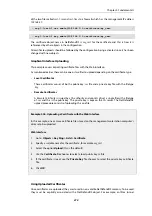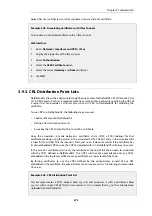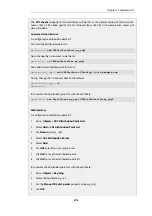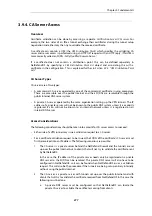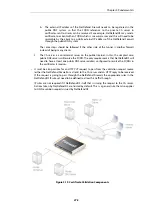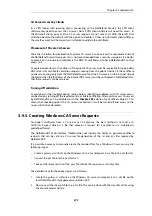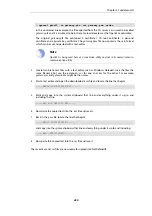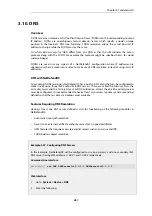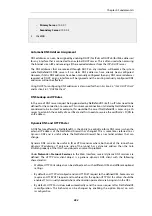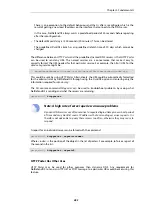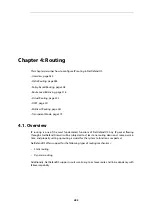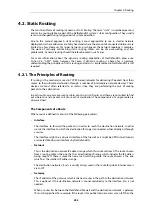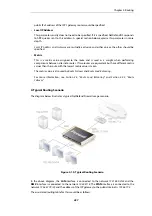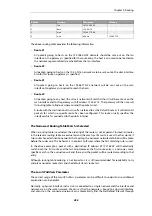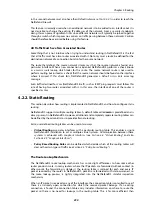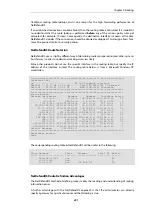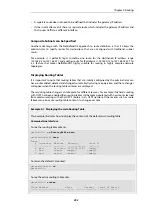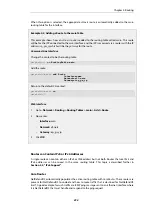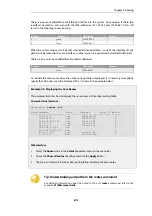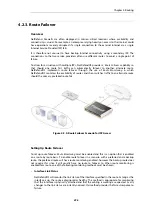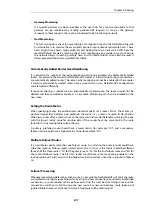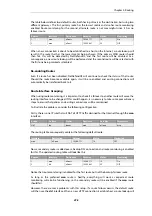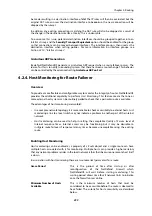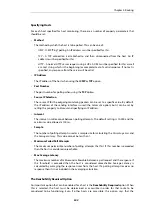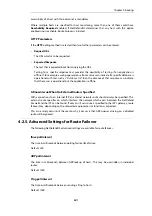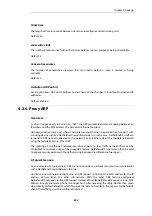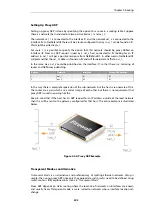
Route #
Interface
Destination
Gateway
1
lan
192.168.0.0/24
2
dmz
10.4.0.0/16
3
wan
195.66.77.0/24
4
wan
all-nets
195.66.77.4
The above routing table provides the following information:
•
Route #1
All packets going to hosts on the 192.168.0.0/24 network should be sent out on the lan
interface. As no gateway is specified for the route entry, the host is assumed to be located on
the network segment directly reachable from the lan interface.
•
Route #2
All packets going to hosts on the 10.4.0.0/16 network are to be sent out on the dmz interface.
Also for this route, no gateway is specified.
•
Route #3
All packets going to hosts on the 195.66.77.0/24 network will be sent out on the wan
interface. No gateway is required to reach the hosts.
•
Route #4
All packets going to any host (the
all-nets
network will match all hosts) will be sent out on the
wan interface and to the gateway with IP address
195.66.77.4
. That gateway will then consult
its routing table to find out where to send the packets next.
A route with the destination
all-nets
is often referred to as the
Default Route
as it will match all
packets for which no specific route has been configured. This route usually specifies the
interface which is connected to the public internet.
The Narrowest Routing Table Match is Selected
When a routing table is evaluated, the ordering of the routes is not important. Instead, all routes
in the relevant routing table are evaluated and the most
specific
route is used. In other words, if
two routes have destination networks that overlap, the narrower network definition will be taken
before the wider one. This behavior is in contrast to IP rules where the first matching rule is used.
In the above example, a packet with a destination IP address of
192.168.0.4
will theoretically
match both the first route and the last one. However, the first route entry is a narrower, more
specific match so the evaluation will end there and the packet will be routed according to that
entry.
Although routing table ordering is not important, it is still recommended for readability to try
and place narrower routes first and the default
all-nets
route last.
The Local IP Address Parameter
The correct usage of the
Local IP Address
parameter can be difficult to understand so additional
explanation can be helpful.
Normally, a physical interface such as
lan
is connected to a single network and the interface and
network are on the same network. We can say that the network
is bound
to a physical interface
and clients on the connected network can automatically find the NetDefend Firewall through
Chapter 4: Routing
288
Summary of Contents for NetDefendOS
Page 30: ...Figure 1 3 Packet Flow Schematic Part III Chapter 1 NetDefendOS Overview 30 ...
Page 32: ...Chapter 1 NetDefendOS Overview 32 ...
Page 144: ...Chapter 2 Management and Maintenance 144 ...
Page 284: ...Chapter 3 Fundamentals 284 ...
Page 392: ...Chapter 4 Routing 392 ...
Page 419: ... Host 2001 DB8 1 MAC 00 90 12 13 14 15 5 Click OK Chapter 5 DHCP Services 419 ...
Page 420: ...Chapter 5 DHCP Services 420 ...
Page 573: ...Chapter 6 Security Mechanisms 573 ...
Page 607: ...Chapter 7 Address Translation 607 ...
Page 666: ...Chapter 8 User Authentication 666 ...
Page 775: ...Chapter 9 VPN 775 ...
Page 819: ...Chapter 10 Traffic Management 819 ...
Page 842: ...Chapter 11 High Availability 842 ...
Page 866: ...Default Enabled Chapter 13 Advanced Settings 866 ...
Page 879: ...Chapter 13 Advanced Settings 879 ...

